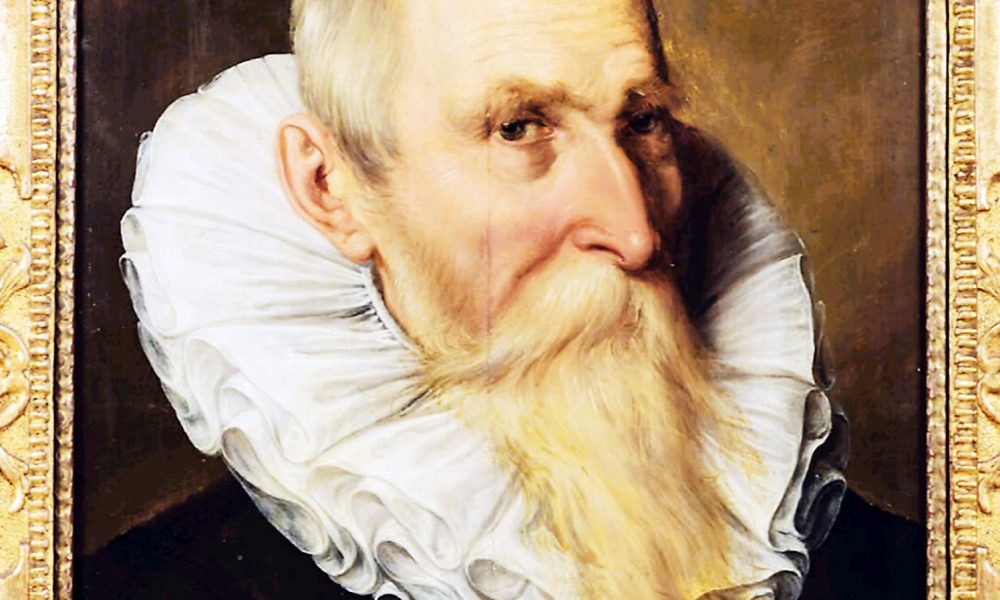News
‘The old man’ that was a much more than an heirloom
A little-known portrait by Flemish Master Peter Paul Rubens was put up for auction in Johannesburg last week by Stephan Welz and Co. Auctioneers.

JULIE LEIBOWITZ
For almost 90 years, this oil painting sat in the living room of a Johannesburg Jewish family in the northern suburbs without them knowing its immense value.
It was bought by their grandfather, a paediatrician in Germany before World War II, and brought to South Africa just before war broke out.
The family knew it was old – and probably had value. In fact, they had a letter “somewhere” from Dutch painter and art dealer Henk Peter Bremmer attesting to the fact that it could be a Rubens. But, like a lot of objects in families, they had formed an emotional attachment to it, calling it the “old man”. And so, it remained in their living room.
In 2017, interested in the value of some of their art, the family contacted Luke Crossley, fine art specialist at Stephan Welz and Co. Auctioneers. Though specialists like Crossley so often have to break the news to clients that their beloved heirlooms are fake and worthless, this family’s story was compelling, indicating that the painting could be real.
Crossley, who told the SA Jewish Report that the family asked to remain anonymous, spent 10 months verifying that the painting was a true Rubens portrait before it was put up for auction. It has been valued at between R5 million to R8 million, though the price could go much higher.
The painting, originally titled “Portrait of a Gentleman”, was bought by the family patriarch, a German Jewish paediatrician, in 1925 at Kunsthandel Komter, Amsterdam.
In 1927, art critics and historians Ludwig Burchard and Wilhelm von Bode confirmed Bremmer’s attribution of the work as a Rubens in an article by Burchard, with a co-signed letter to the owner.
Burchard believed the work was created sometime between 1598 – the date of Rubens’ appointment to the prestigious Guild of Painters of Antwerp – and 1609. The latter date was when the artist returned to Antwerp from Italy, following the death of his mother.
The doctor, who was also an art collector, would often discuss current affairs with his patients, according to the auction catalogue. “During one fateful discussion, the true extent of the current political situation and resurgence of National Socialism was made clear to him. Resolving to leave Germany, the doctor took up an offer from one of his patients to secure his personal effects, including his art collection, in order to facilitate his flight. All of the entrusted possessions were returned to the doctor upon escape from Germany before his journey to the southern hemisphere.”
The doctor also owned a painting by famous Flemish painter Jan Brueghel, which he sold upon arrival in Johannesburg to set himself up in practice.
Crossley pointed out that it is “very unusual” to find a more than 400-year-old artwork hanging in a Johannesburg living room. So to allay scepticism, he researched art publications, the Dutch national archives, and old auction records to establish authenticity.
The oldest record uncovered was that of auction house Jovenau in Doornik, Belgium, in 1740, when the work was sold as “Portrait of a Man” by Sir Peter Paul Rubens.
Over the centuries, the work has been held in Munich, London, and Amsterdam, before finally arriving in South Africa. It was kept for roughly 80 years each time, mostly in private collections, which is partly why the price is on the low end.
The painting is relatively unknown, and has not been in any major exhibition.
The portrait is a true representation of the sitter, with no sugar coating or idealisation, making it all the more powerful. The “old” man is painted as is, including balding head and sombre black epaulets. This was in line with the 16th century Dutch Masters’ attempt to portray daily existence, which was an artistic revolution in its time.
“It’s really beautiful,” says Crossley, describing the play of light and shadow, delicate brushwork, and fineness of detail. The gentleman appears like a stern member of the bourgeoisie at first. On closer inspection, there is a twinkle in his eye and obvious humour about the face – indicating a complex personality.
The portrait is believed to be of artist Jan Brueghel, who was a close friend of Rubens, although this can’t be confirmed. At the beginning of the 17th century, Rubens and Brueghel the Elder were the two most famous painters in Antwerp. They were also frequent collaborators, who over the course of 25 years from about 1598 to 1625, executed about 24 works together.
The auction, which was concluded on Friday, took the form of sealed commission bids. This allowed “buyers to do research, give the international market the opportunity to discover it, and to protect the identities of seller and buyer”.
The work has garnered some international attention, and it could end up overseas. The purchase price wasn’t confirmed at the time of going to press.
Crossley says it is a great privilege to have the opportunity to sell such a rare artwork. Looking at the portrait, and after a year of rigorous research, he says, “It’s wonderful to be able to finally share it with the world.”